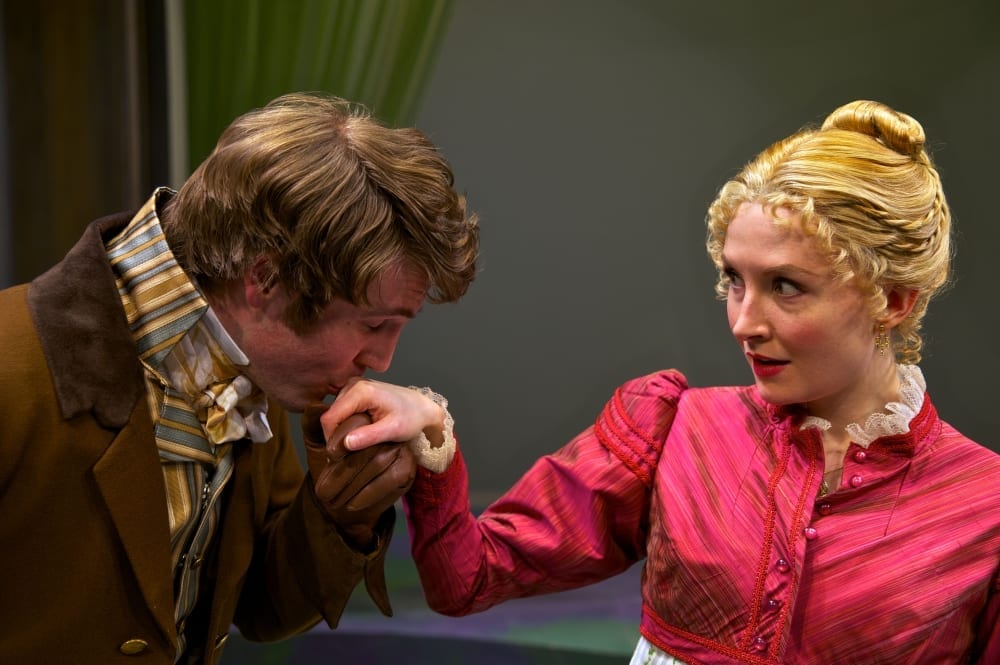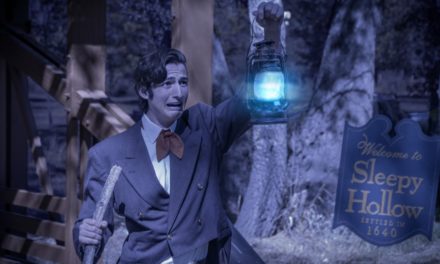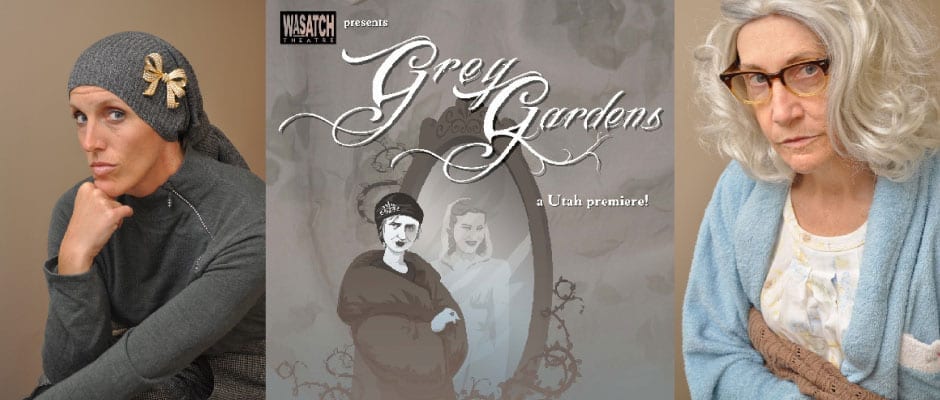SALT LAKE CITY — To begin, I must make a confession: though I am an avid Jane Austen reader, Emma is not my favorite Austen novel or character; she’s rich, spoiled, and she meddles in other people’s business. Austen herself said of Emma, “I am going to take a heroine whom no-one but myself will much like.” For most of my literary career I’ve lived up to Jane Austen’s words; I’ve always found Emma rather difficult to like. But last Friday night at Pioneer Theatre Company may have changed that for me.
PTC’s current production is adapted by Jon Jory, the former artistic director of the Actors Theatre of Louisville. Jory’s script is a smart, lean adaptation, especially considering how thick the book is. Both playwright and company are to be commended for the fantastic pacing; while the lines can be lengthy and there are quite a few to get through, they were spoken quickly and clearly (quite a feat considering the size of the house), and I found myself anxious to know what was going to happen next. Though there were no surprises for me (being familiar with the book) the storytelling was strong enough for me to both suspend my disbelief and revel in the unfolding of events. If there was a fault I might find in the script, it would be in the moments when Emma would step aside and speak to the audience; breaking the fourth wall feels wrong in the Austen universe. However, I should note that if there were any Austen heroine that would speak directly to the audience, it would probably be Emma—a thought which allowed me to forgive the monologuing.
Emma Woodhouse (Nisi Sturgis) is a young woman of wealth and rank who, when the play opens, is celebrating a successful matchmaking venture: she takes credit for her dear friend Miss Taylor (Kymberly Mellen) making a most suitable marriage to the kind and well-off Mr. Weston (Paul Kiernan). Emma, decidely against marrying herself, sets out to find a suitable husband for her protégé, a young woman without great social prospects, Harriet Smith (Katie Fabel). When close family friend Mr. Knightley (Michael Sharon) warns her against meddling with the love lives of others, Emma waves him off only to soon find herself tangled in a web of miscommunications and mistaken affections.
One of the things that I think makes Austen wonderful in performance is that her characters could be shallow and one-dimensional but in actuality are quite complex, offering room for talented actors to bring levels and nuance to their roles. The casting in this show is rather ideal. As the title character, the charismatic Nisi Sturgis strikes an effective balance between selfish and selfless. Her Emma is breezy and confident without being bossy; I was constantly smiling when she was onstage. I wanted her to succeed, even if her matchmaking was a ridiculous pastime. Michael Sharon is a dreamy Mr. Knightley—tall and dashing, he takes command of every scene as soon as he enters it. Kymberly Mellen is a warm and wonderful Mrs. Weston, serving as a confidant to Emma and Knightley both. There is no villain in this piece, though you could make an argument for Jordan Coughtry’s Frank Churchill, with his edged smile, being rather a scoundrel. Even the characters you see little of are rounded and real, though their dialogue is heightened: Jeffrey Hayenga, for example, as Emma’s germaphobe father, could so easily be obnoxious; but I found myself wanting to hug him, give him a cup of warm milk, and put him to bed.
The production is beautiful to look at. The costumes, designed by Brenda Van der Weil, are lovely. Gauzy dresses, tall boots, delectable frock coats—I could see amazing attention to detail in every piece. Bill Clarke’s set design is simple and open, allowing for the story’s numerous locations to be easily and elegantly served by minimal furniture, sliding panels of latticework, and turntables set in the stage floor. Scene changes were quick and quiet, and there were lovely moments of theatrical magic made possible by Clarke’s smart designs. The non-moving set was painted to appear like an English garden, simple and unobtrusive enough to allow lighting designer Kendall Smith to also “paint,” separating the different locations with colored light. The only part of the set I found to be out of place was the proscenium frame far upstage, behind which was a cyc that often portrayed a cloudy sky. While I loved the effect of the cyc, I wasn’t sure of the purpose of the false proscenium; it gave me the feeling that we were going to see a play within a play, though that’s not the case at all, and most of the play’s action seems to take place at center or further down. The frame is too thick and heavy in its appearance to give the impression of a picture window, and I was never quite sure of its purpose.
Kudos go to director Matthew Arbour, whom I thank for infusing this play with just the right amount of laughter and froth. The whole thing could have been ridiculous and over the top, but I was glad to see the the show and its characters remain grounded. Despite her shortcomings, Emma does in fact change, and I found the play’s climax to be both dramatically and romantically satisfying. I do wonder, though, that the final lines of the play are shared between Emma and her father. I kind of wish the ending button had come with the scene before (I won’t go into more detail, as to do so would spoil the story). While the final scene between Emma and Mr. Woodhouse is cute it’s also a bit of a letdown because, at that point, they are not the couple the audience wants to see.
I had a lovely time seeing and experiencing Emma. If you want to write it off as nothing but “chick lit,” I suppose that’s your choice; I found it to simply be a classic story well told. I highly recommend it.







